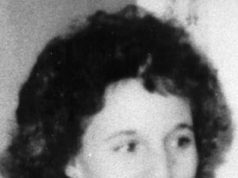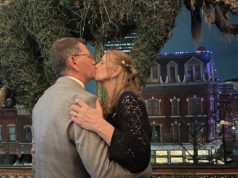As any survivor of a 12-step program knows, you have to admit you have a problem before you can attack it.
![Paine (at right, with project planner Mike Brennan): “Right now is the time to do [light rail] because a number of factors are coming together.”](https://www.fwweekly.com/wp-content/images/stories/images/archive/2007-10-03/metro_horz_10-03.jpg) In Fort Worth’s case, city council members may be on the verge of admitting they have a problem (unmanageable traffic) and further accepting that that they are powerless to solve it without the help of a higher power — in this case, mass transit. Next week, for the second time since 2001, the council will get a report, backed by considerable research, recommending that Fort Worth, at long last, join the other major cities in this country in building a light-rail system. The last time the recommendation was presented, at the conclusion of a $1 million study, it was shelved, in part because local officials feared Cowtown wasn’t sufficiently urban. Meaning that its inner city wasn’t densely developed enough to provide the riders to support such a system and to qualify it for federal funding.
In Fort Worth’s case, city council members may be on the verge of admitting they have a problem (unmanageable traffic) and further accepting that that they are powerless to solve it without the help of a higher power — in this case, mass transit. Next week, for the second time since 2001, the council will get a report, backed by considerable research, recommending that Fort Worth, at long last, join the other major cities in this country in building a light-rail system. The last time the recommendation was presented, at the conclusion of a $1 million study, it was shelved, in part because local officials feared Cowtown wasn’t sufficiently urban. Meaning that its inner city wasn’t densely developed enough to provide the riders to support such a system and to qualify it for federal funding.
After six years of rising gas prices, increasing air pollution, and construction of thousands of inner-city condos, town homes, and apartment units, that objection may be overcome. Next week, the Fort Worth Central City Redevelopment Committee, which deals with issues relating to downtown development and infrastructure, will recommend the city invest in urban light rail. The panel wants Fort Worth to build four “ultra-light-rail” lines, trains that would run on rails built into the street and powered by overhead electric lines. And because the Fort Worth Transportation Authority (“The T”) has problems finding the money for such projects, the committee wants the city to study ways to pay for the system itself, and then turn over operations to The T once the lines are up and running.
The fact that council has given the committee time on a busy meeting agenda is significant. In the past, the only solution the city seemed to consider for the current transportation mess was to build more roads. “Right now is the time to do this because a number of factors are coming together,” said Paul Paine, president of Fort Worth South, Inc., and a member of the committee. “Better mass transit options are important for future growth of the city. When you look around the country, every major city has some form of light rail to move people around the city more efficiently. We are now the 17th-largest city in the country … and we don’t.” The four lines recommended would stretch to all areas of the inner city. One would go out West 7th Street to the Cultural District and use Farrington Field as a park-and-ride hub. A second line would link the Hospital District with downtown, and another would go out North Main Street to the Stockyards area. The fourth line would go through the Evans/Rosedale area, ending at Texas Wesleyan University.
These initial lines would cover a modest total of about 15 miles. Modern streetcar systems generally cost about $10 million to $15 million per mile, so the cost of that starter system would total $150 million to $225 million. In 2001, Fort Worth’s million-dollar study on the feasibility of light rail produced similar recommendations. Former Mayor Kenneth Barr was a big backer of light rail, but when he decided not to run in 2002, and Mike Moncrief was elected as his replacement, the plan was dropped. Former city staffers and council members say Moncrief lost interest after a Washington-based consultant said the Federal Transportation Authority would not back the project due to the lack of high-density development along the planned lines, meaning a lack of ridership.
Moncrief did not respond to requests for an interview about light rail. “What has happened over the last five years is that we are now going to have the high density that the feds need,” said architect and real estate development consultant Philip Poole, who is also a member of the committee. “And when you look at all the other factors — high gas prices, traffic congestion, air pollution — this makes sense to do right now. Because we all know you cannot build roads fast enough. We need other options, especially in the inner city.” The more intense development that may make the rail system palatable is happening most visibly to the west of downtown, but housing additions are also going up south and southeast of downtown, with another expected major boost to the north if the Trinity River Vision project comes to fruition. About 1,500 housing units are planned in and around the Cultural District in the next few years. New housing developments are also going in the Near South Side, which, with all of its hospitals, is second only to downtown in the number of jobs it provides. And even in the more depressed Evans/Rosedale area, new houses are being built on the old Masonic Home property.
“With the development going on in this city, and with the cost of land and building of roads, we can’t even keep up with it,” said real estate developer Tom Struhs. “The question is how the city handles the needed infrastructure.” The rail system “should be the highest priority on our list right now,” he said. Considering the amount of time people spend in their cars and the long lead time needed for new roads, “Well, all of these things point to the exact same thing,” he said, “and that is better mass transit.” Of course, funding such a project is the great problem. The T has put its limited money into a commuter rail line that will run from southwest Fort Worth through downtown, north to Grapevine, and then into Dallas/Fort Worth International Airport. The train would run on the old Cotton Belt freight tracks and cost about $390 million. The T officials are asking the federal government to cover about half of that.
Dick Rudell, general manager of The T, acknowledged that Fort Worth and his agency could end up in competition for federal dollars. Nonetheless, he sees the need for inner-city light rail. “We will cooperate with the city in any way we can,” he said. The report suggests a number of funding options. One would be tax-increment financing districts, in which future property tax growth near rail lines would be used to pay off bonds. The city of Portland, Ore., build a light-rail line five years ago with a downtown parking tax, where a dollar of each parking fee went to pay for the rail system. The committee is also recommending that the city start applying for state and federal funding that could pay half the cost. Members of the committee also want the city council to consider using some of the Barnett Shale gas drilling money to pay for what they consider a “legacy” project.
The city council seems more receptive to the idea of a light rail system than it has been in the past. Council member Kathleen Hicks said she would support it. “When I go elsewhere, I see such good transportation options, and I just don’t see it here … . We’ve got to find other sources to get people around, and I believe people would utilize this.” She agreed that using Barnett Shale money for light rail should be considered. Some council members still want further study. “We are going to have dense concentration of development, and we obviously need to look at light rail within the city,” Jungus Jordan said. “What we need to do is look at a host of transportation options and the attributes of different systems.”
Council member Chuck Silcox is worried about spending money on light rail when the city has a $1.7 billion backlog of road projects. “I’m not a big fan of light rail using trolleys. The congestion is happening from people outside of Loop 820 coming into the downtown area. If we are going to invest in rail mass transit, I think those would be the areas we should concentrate on, because that will get people out of their cars,” he said. “But I agree that we have to look at other alternatives besides just building more roads.
Paine, from Fort Worth South, agreed. He said the purpose of the report is to get the city to recognize the need, and the funding will follow. “The first step is to articulate a requirement,” he said. “If you accept that this is a requirement, then you figure out how to fund it.”
You can reach Dan McGraw at
dan.mcgraw@fwweekly.com.











